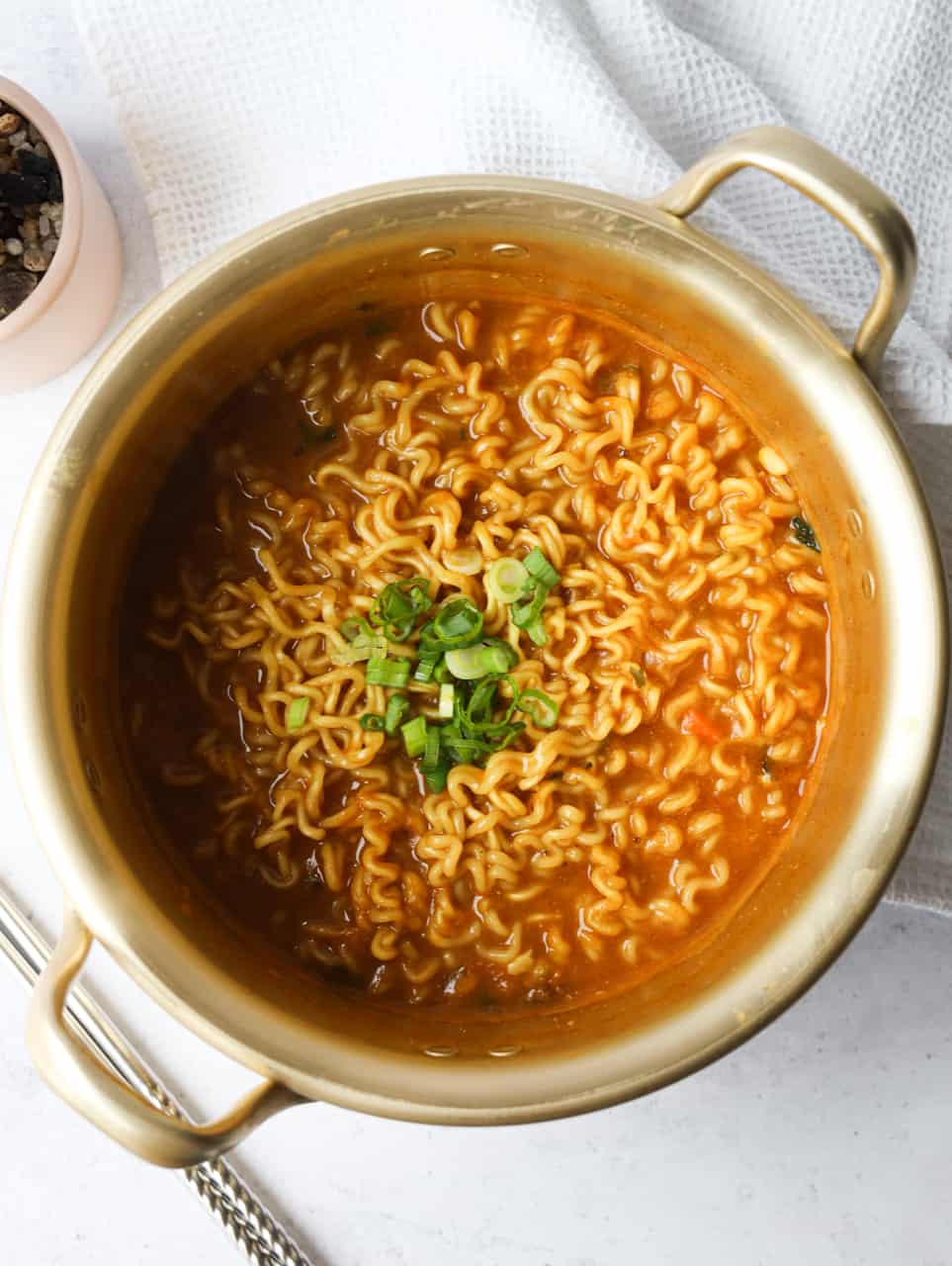

Articles
How To Store Cooked Ramen Noodles
Modified: August 25, 2024
Learn the best methods for storing cooked ramen noodles and keep them fresh for longer. Read our informative articles now and start enjoying your favorite dish anytime.
(Many of the links in this article redirect to a specific reviewed product. Your purchase of these products through affiliate links helps to generate commission for Storables.com, at no extra cost. Learn more)
Introduction
One of the most beloved and versatile dishes in Asian cuisine is ramen noodles. Its rich broth, chewy noodles, and various toppings make it a go-to comfort food for many. But what if you find yourself with leftover cooked ramen noodles? Can they be stored safely for future consumption? The answer is yes! In this article, we will explore the best methods for storing cooked ramen noodles to maintain their flavor and texture.
Storing leftovers is a common practice in households, as it allows you to save time and money by repurposing cooked food. However, when it comes to ramen noodles, there are a few factors to consider to ensure that they remain delicious and safe to eat. The key is to understand the nature of these noodles and how to preserve their quality.
Ramen noodles are made from wheat and water, and their texture is achieved through the cooking process. When cooked, these noodles absorb the flavors of the broth and become soft and chewy. However, over time, they can lose their texture and become mushy or dry if not stored properly.
By following the right guidelines for storing cooked ramen noodles, you can enjoy their deliciousness even after they have cooled down. Whether you want to refrigerate, freeze, or store them at room temperature, there are methods that will help maintain their taste and texture for future consumption.
In the following sections, we will discuss the general guidelines for storing cooked ramen noodles, as well as the different storage options available. We will also provide tips for reheating the stored noodles and maintaining their flavor and texture. By the end of this article, you will have all the information you need to store your cooked ramen noodles efficiently and enjoy them whenever you crave a tasty and convenient meal.
Key Takeaways:
- Store leftover ramen noodles to save time, money, and reduce food waste. Refrigerate for short-term use, freeze for long-term storage, and reheat with fresh ingredients for a satisfying meal anytime.
- Properly stored and reheated cooked ramen noodles maintain their delicious flavor and texture. Follow storage guidelines, use creative reheating methods, and add fresh ingredients to elevate the dining experience.
Read more: How To Store Leftover Noodles
Why Store Cooked Ramen Noodles?
There are several reasons why you might want to store cooked ramen noodles instead of consuming them immediately. Let’s explore some of these reasons:
1. Leftovers: Perhaps you made a large batch of ramen noodles and couldn’t finish them all. Instead of letting them go to waste, storing the leftovers allows you to enjoy them later without the hassle of cooking a new batch.
2. Convenience: Cooking ramen noodles from scratch can be time-consuming, especially when you’re looking for a quick and easy meal. By storing cooked ramen noodles, you can have a delicious meal ready in minutes, saving you time and effort.
3. Meal Planning: If you like to plan your meals in advance, storing cooked ramen noodles can be a great option. You can prepare a large batch and portion it into individual servings, making it easier to create quick meals throughout the week.
4. Versatility: Cooked ramen noodles can be used in various dishes beyond traditional ramen bowls. You can incorporate them into stir-fries, soups, salads, or even make crispy noodle cakes. By storing cooked ramen noodles, you have a versatile ingredient on hand for a variety of culinary creations.
5. Budget-friendly: Storing cooked ramen noodles can help you stretch your food budget. Instead of ordering takeout or buying pre-packaged meals, having a stash of cooked noodles allows you to create tasty and inexpensive dishes at home.
6. Portion Control: Storing cooked ramen noodles in individual servings can help with portion control. This is especially beneficial if you’re watching your calorie intake or trying to maintain a well-balanced diet.
7. Reduced Food Waste: By storing cooked ramen noodles, you contribute to reducing food waste. Instead of throwing away leftovers, you can repurpose them into delicious meals, minimizing the amount of food that goes unused.
With these reasons in mind, storing cooked ramen noodles becomes a practical and beneficial option. Not only does it provide convenience and versatility, but it also helps with meal planning and budgeting while reducing food waste. Now that we’ve explored the reasons behind storing cooked ramen noodles, let’s delve into the guidelines for proper storage.
General Guidelines for Storing Cooked Ramen Noodles
Proper storage is essential to maintain the flavor and texture of cooked ramen noodles. Here are some general guidelines to follow:
1. Cool the Noodles: Before storing, allow the cooked ramen noodles to cool down completely. This prevents condensation and helps maintain their texture during storage.
2. Use Airtight Containers: Transfer the cooled noodles into airtight containers or resealable plastic bags. Removing as much air as possible will help prevent freezer burn and maintain the quality of the noodles.
3. Label and Date: Always label your containers or bags with the date of storage. This will help you keep track of the freshness and prevent any confusion when you decide to use them later.
4. Store in Small Portions: It is recommended to store cooked ramen noodles in small portions rather than one large batch. This allows for easier reheating and prevents overexposure to air, which can lead to deterioration in quality.
5. Refrigerate or Freeze Promptly: If you are not planning to consume the cooked ramen noodles within a few hours, it is best to either refrigerate or freeze them promptly to maintain their freshness.
6. Keep Separate from Broth: If you have leftover broth from your ramen noodles, it is best to store it separately. Storing the noodles and broth together can result in soggy noodles, affecting the overall taste and texture.
7. Follow Storage Time: Whether you choose to refrigerate or freeze the cooked ramen noodles, make sure to follow the recommended storage times. This will ensure optimal freshness and prevent the growth of harmful bacteria.
8. Avoid Room Temperature Storage: It is generally not recommended to store cooked ramen noodles at room temperature for an extended period. Room temperature storage can lead to bacterial growth and spoilage.
By following these general guidelines, you can store cooked ramen noodles properly and ensure they maintain their quality. Now, let’s explore the different storage options available for cooked ramen noodles.
Option 1: Refrigerating Cooked Ramen Noodles
Refrigerating cooked ramen noodles is a popular option for short-term storage. It allows you to keep the noodles fresh and ready for consumption within a few days. Here’s how to refrigerate cooked ramen noodles:
1. Cool the Noodles: Allow the cooked ramen noodles to cool down at room temperature for about 20 minutes. You can also rinse them under cold water to speed up the cooling process.
2. Portion into Containers: Transfer the cooled noodles into airtight containers or resealable plastic bags. Divide them into individual or serving-sized portions for easier use later.
3. Add Oil: To prevent the noodles from sticking together, you can toss them with a small amount of oil, such as sesame oil or vegetable oil. This will help maintain their texture and make reheating easier.
4. Seal and Refrigerate: Seal the containers or bags tightly to prevent air from entering. Place them in the refrigerator and make sure the temperature is set below 40°F (4°C).
5. Recommended Storage Time: Cooked ramen noodles can be refrigerated for up to 3 to 4 days. Beyond that, their quality may deteriorate, and they can become mushy.
6. Reheating: When you’re ready to enjoy the refrigerated cooked ramen noodles, you can reheat them in a couple of ways. One method is to briefly microwave them, adding a splash of water to prevent them from drying out. Alternatively, you can reheat them on the stovetop by adding them to a pot of boiling water for a minute or two.
7. Refreshing the Flavor: If the noodles seem a bit dry after refrigeration, you can revitalize their flavor by adding a bit of warm broth or sauce. This will help bring back their original taste and texture.
Refrigerating cooked ramen noodles is a convenient option when you plan to consume them within a few days. However, if you want to store them for a longer period, freezing is a better choice. Let’s explore how to freeze cooked ramen noodles in the next section.
Option 2: Freezing Cooked Ramen Noodles
If you want to store cooked ramen noodles for a longer period, freezing is a great option. Freezing helps to preserve the texture and flavor of the noodles, allowing you to enjoy them at a later time. Here’s how to freeze cooked ramen noodles:
1. Cool the Noodles: After cooking, allow the ramen noodles to cool completely at room temperature. Cooling them down before freezing helps maintain their texture.
2. Portion into Containers: Divide the cooled noodles into individual or serving-sized portions. This step is vital to ensure easy access and prevent the need to defrost and re-freeze the entire batch every time you want a serving.
3. Double Bagging: To protect against freezer burn, it is recommended to double bag the cooked ramen noodles. Use freezer-safe zip-top bags or airtight containers. Squeeze out any excess air from the bags before sealing them.
4. Label and Date: Don’t forget to label the bags or containers with the date of freezing. This will help you keep track of their freshness and determine their consumption order.
5. Freeze: Place the bags or containers of cooked ramen noodles in the freezer. Try to lay them flat to maximize freezer space and ensure quicker and more even freezing.
6. Recommended Storage Time: Cooked ramen noodles can be stored in the freezer for up to 2 to 3 months without significant loss of quality. Beyond that, they may start to develop freezer burn or taste stale.
7. Thawing and Reheating: When you’re ready to enjoy the frozen cooked ramen noodles, you can defrost them in the refrigerator overnight. Alternatively, you can thaw them quickly by placing the bag or container in a bowl of cold water. Once thawed, reheat them by adding them to a pot of boiling water for a minute or two, or by briefly microwaving them with a splash of water.
8. Refreshing the Flavor: Similar to refrigerated noodles, if the frozen noodles appear dry, you can refresh their flavor by adding a bit of warm broth or sauce before serving.
Freezing cooked ramen noodles is a wonderful option for long-term storage. It allows you to have a delicious and convenient meal ready whenever you need it. However, if you prefer to store cooked ramen noodles at room temperature for shorter periods, there is an option for that as well. Let’s discuss it next.
After cooking, rinse the noodles with cold water to stop the cooking process and prevent them from sticking together. Store them in an airtight container in the refrigerator for up to 3 days.
Read more: How To Cook Ramen On Stove Top
Option 3: Room Temperature Storage
While refrigerating and freezing are the preferred methods for storing cooked ramen noodles, there is also an option for storing them at room temperature. However, it’s important to note that room temperature storage should only be done for a short period, usually no longer than a few hours. Here’s how to store cooked ramen noodles at room temperature:
1. Cool the Noodles: Allow the cooked ramen noodles to cool down at room temperature for about 20 minutes. Ensure they are not hot before proceeding with room temperature storage.
2. Use airtight containers or plastic wraps: Transfer the cooled noodles into airtight containers or wrap them tightly with plastic wrap. This helps to keep the noodles protected from air exposure and any potential contaminants.
3. Store in a cool and dry place: Find a cool area in your kitchen or pantry away from direct sunlight or heat sources. Keeping the noodles in a dry environment is crucial to prevent moisture absorption and the growth of bacteria.
4. Recommended Storage Time: It is generally safe to store cooked ramen noodles at room temperature for a maximum of 2 to 3 hours. Beyond this time frame, the noodles can become a breeding ground for bacteria, leading to foodborne illnesses.
5. Reheating: If you plan to consume the room temperature stored noodles, it’s essential to reheat them thoroughly before eating. This can be done by adding the noodles to a pot of boiling water for a minute or two, or by briefly microwaving them with a splash of water.
6. Check for freshness: Before reheating and consuming the room temperature stored noodles, inspect them for any signs of spoilage such as an odd odor, discoloration, or sliminess. If any of these signs are present, it is best to discard the noodles.
7. Use your discretion: It’s important to use your judgement and discretion when it comes to room temperature storage of cooked ramen noodles. If you live in a hot and humid climate or if your kitchen temperature exceeds 90°F (32°C), it is best to refrigerate or freeze the noodles right away to ensure food safety.
While room temperature storage is not the ideal choice for cooked ramen noodles, if done correctly and for a short period, it can be an option. However, it is always recommended to refrigerate or freeze the noodles for longer-term storage to maintain their quality and safety.
Now that you know the different storage options, it’s crucial to understand how to properly reheat the stored cooked ramen noodles. Let’s explore that in the next section.
How to Reheat Stored Cooked Ramen Noodles
Reheating stored cooked ramen noodles is key to enjoying them at their best. Whether you refrigerated or froze the noodles, here are some methods you can use to reheat them:
1. Microwave: This is the quickest and easiest method for reheating cooked ramen noodles. Place the noodles in a microwave-safe dish and add a splash of water to prevent them from drying out. Cover the dish with a microwave-safe lid or microwave-safe plastic wrap and heat in 30-second intervals, stirring in between. It may take a few rounds of heating to reach the desired temperature.
2. Stovetop: If you prefer a more hands-on approach, you can reheat the cooked ramen noodles on the stovetop. Add the noodles to a pot of boiling water and cook for a minute or two, stirring gently to prevent clumping. Drain the noodles and rinse them with warm water to remove any starchiness before serving.
3. Oven: If you want to reheat a larger portion of cooked ramen noodles, using the oven can be a suitable option. Preheat your oven to a low temperature, around 300°F (150°C). Place the noodles in an oven-safe dish and cover it with aluminum foil. Heat in the oven for 10-15 minutes or until the noodles are heated through.
4. Steam: Another method to reheat the stored cooked ramen noodles is by steaming. Fill a pot with a small amount of water and bring it to a simmer. Place the noodles in a steamer basket or colander and position it over the pot, making sure the noodles are not touching the water. Cover the pot and steam for a few minutes until the noodles are heated thoroughly.
5. Combining with Hot Broth: If you have leftover broth from your ramen noodles, you can reheat the noodles by combining them with hot broth. Heat the broth in a pot on the stovetop until it reaches a simmer. Add the noodles to the pot and stir gently until the noodles are heated through. This method helps to bring back the original flavors of the dish.
Regardless of the reheating method you choose, it’s important to ensure that the cooked ramen noodles are heated to a safe internal temperature of 165°F (74°C) to avoid any risk of foodborne illnesses.
Now that you know how to reheat the stored cooked ramen noodles, let’s explore some tips to help you maintain their flavor and texture.
Tips for Maintaining Flavor and Texture
To ensure that your stored cooked ramen noodles maintain their delicious flavor and desirable texture, here are some helpful tips to keep in mind:
1. Store the Noodles and Broth Separately: If you have leftover broth from your ramen noodles, it’s best to store it separately. Keeping the noodles and broth together can make the noodles soggy and affect their texture.
2. Add Sauce or Seasoning Before Reheating: If you want to enhance the flavors of the reheated noodles, consider adding your favorite sauces or seasonings just before reheating. This can help revitalize the taste and make the noodles more enjoyable.
3. Use Fresh Ingredients: When reheating cooked ramen noodles, consider adding fresh ingredients to elevate their flavor. This can include vegetables, herbs, sliced meats, or even a soft-boiled egg. These additions will not only enhance the taste but also provide a satisfying and complete meal.
4. Avoid Overcooking: When reheating the stored cooked ramen noodles, be cautious not to overcook them. Overcooking can lead to a mushy or soft texture, compromising their quality. Keep a close eye on the noodles and remove them from heat as soon as they are heated through.
5. Adjust Seasonings: Sometimes, the stored cooked ramen noodles may need a little extra kick of flavor. Adjust the seasonings as needed by adding more soy sauce, chili oil, or any other preferred condiments. This will help bring back the bold and satisfying taste of the original dish.
6. Garnish Freshly: Add garnishes and toppings to the reheated noodles just before serving. This includes spring onions, sesame seeds, nori strips, or any other toppings that complement the flavor profile of the dish. Fresh garnishes add visual appeal and enhance the overall dining experience.
7. Avoid Excessive Reheating: Reheating the cooked ramen noodles multiple times may cause them to lose their texture and flavor. Try to reheat only the amount you plan to consume at a particular time, rather than reheating the entire batch repeatedly.
8. Experiment and Get Creative: Don’t be afraid to get creative with the reheated cooked ramen noodles! Use them as a base for stir-fries, incorporate them into salads, or even turn them into crispy noodle cakes. Creativity in the kitchen can help you enjoy the noodles in new and exciting ways.
By following these tips, you can maintain the flavor and texture of your stored cooked ramen noodles, ensuring a delightful eating experience each time you enjoy them.
With all these guidelines and tips in mind, you are now equipped with the knowledge to store, reheat, and savor your cooked ramen noodles. This allows you to enjoy the convenience and deliciousness of this popular Asian dish at any time you desire!
Remember to always exercise food safety practices and trust your judgment when it comes to the freshness and quality of stored cooked ramen noodles. Now go ahead and store those leftovers confidently, knowing that a delectable and satisfying meal awaits you.
Happy cooking and storing!
Conclusion
Cooked ramen noodles are a delicious and versatile dish that can bring comfort and satisfaction to any mealtime. Learning the proper methods for storing and reheating these noodles ensures that you can enjoy their flavor and texture even after they have been cooked. Whether you choose to refrigerate, freeze, or store them at room temperature, each method offers its own advantages for different storage durations.
Refrigerating cooked ramen noodles is a convenient option when you plan to consume them within a few days. It helps to preserve their freshness and allows for quick and easy reheating. Freezing, on the other hand, is ideal for long-term storage. It helps maintain the texture and flavor of the noodles, providing you with a ready-to-eat meal at any time.
If you prefer to store cooked ramen noodles at room temperature, it is important to remember that this method should only be used for a short period, typically no longer than a few hours. Room temperature storage is not recommended for prolonged periods to prevent the growth of harmful bacteria.
When reheating stored cooked ramen noodles, using methods such as microwaving, stovetop heating, oven, or steaming can help restore their taste and texture. Additions like fresh ingredients, sauces, and seasonings can elevate the flavors further, allowing you to customize your meal to your preferences.
By following the tips provided in this article, you can ensure that your stored cooked ramen noodles maintain their deliciousness. Be mindful of the recommended storage times, label your containers with the dates, and use your discretion when it comes to food safety.
With proper storage and reheating techniques, you can enjoy the convenience and versatility of cooked ramen noodles even days or weeks after they have been prepared. So, the next time you find yourself with leftover ramen noodles, don’t hesitate to store them for future enjoyment. With these guidelines, you can make the most of your noodles and savor their delectable flavors whenever the craving strikes.
Now go ahead, store those leftovers, and indulge in a satisfying bowl of cooked ramen noodles whenever you desire. Happy eating!
Excited about keeping your ramen fresh? Mastering food preservation doesn't stop here! If you're keen on exploring more robust ways to keep all your groceries at their peak, our upcoming article on the best methods for food storage is your next stop. Discover practical, innovative solutions that will transform your kitchen into a haven for fresh ingredients.
Frequently Asked Questions about How To Store Cooked Ramen Noodles
Was this page helpful?
At Storables.com, we guarantee accurate and reliable information. Our content, validated by Expert Board Contributors, is crafted following stringent Editorial Policies. We're committed to providing you with well-researched, expert-backed insights for all your informational needs.

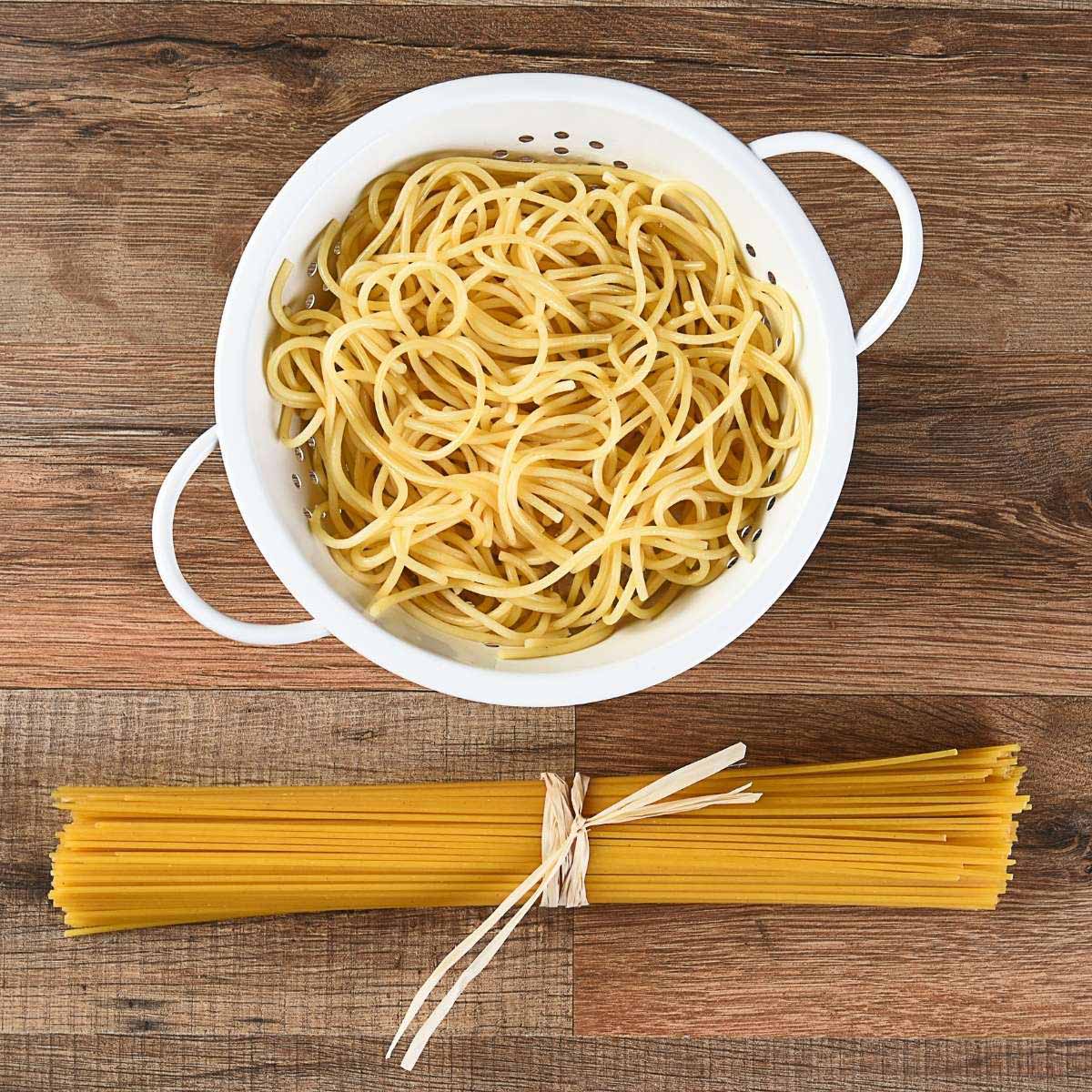

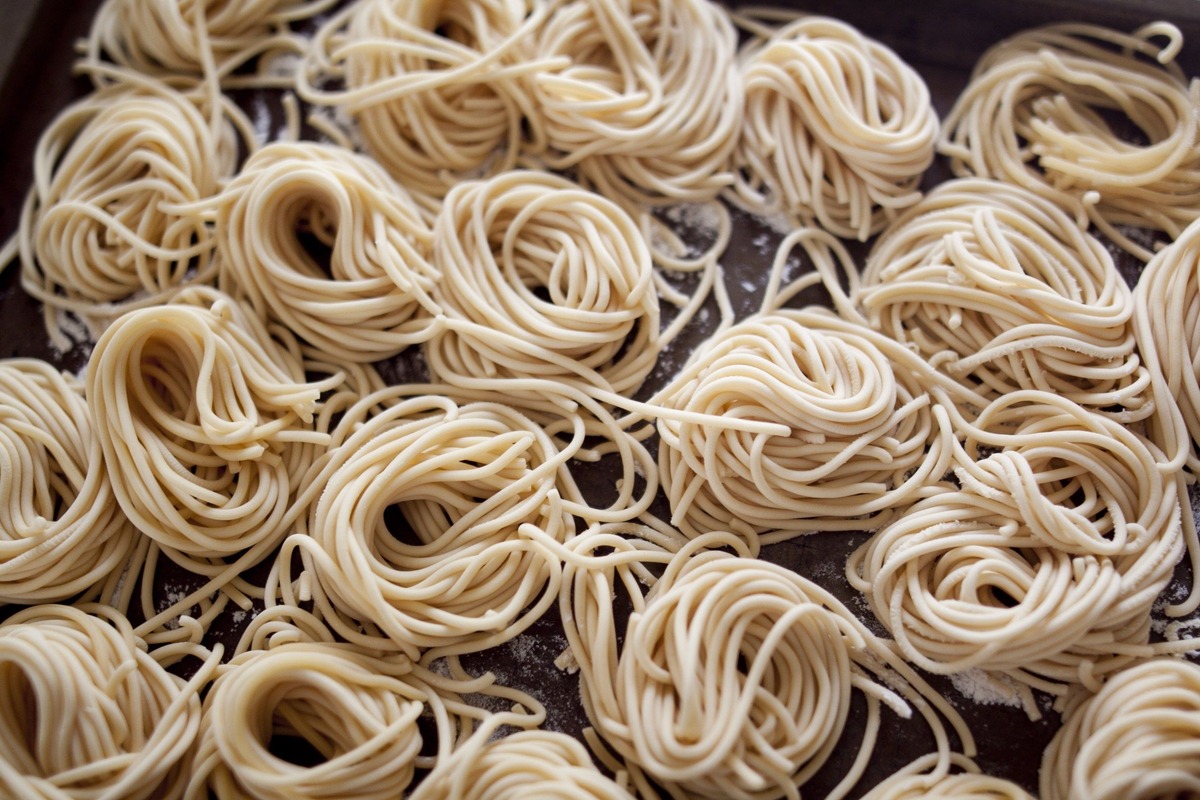
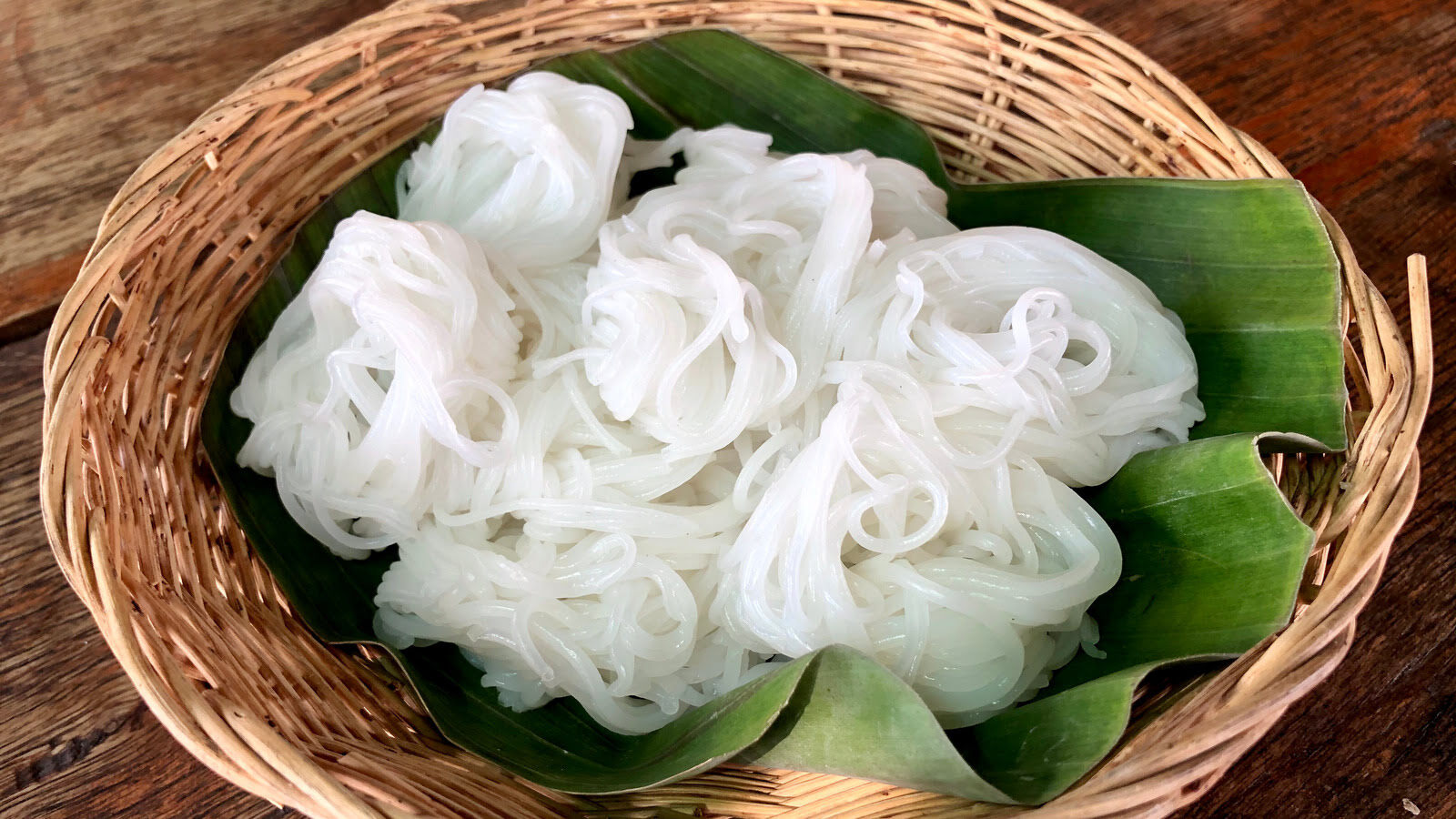
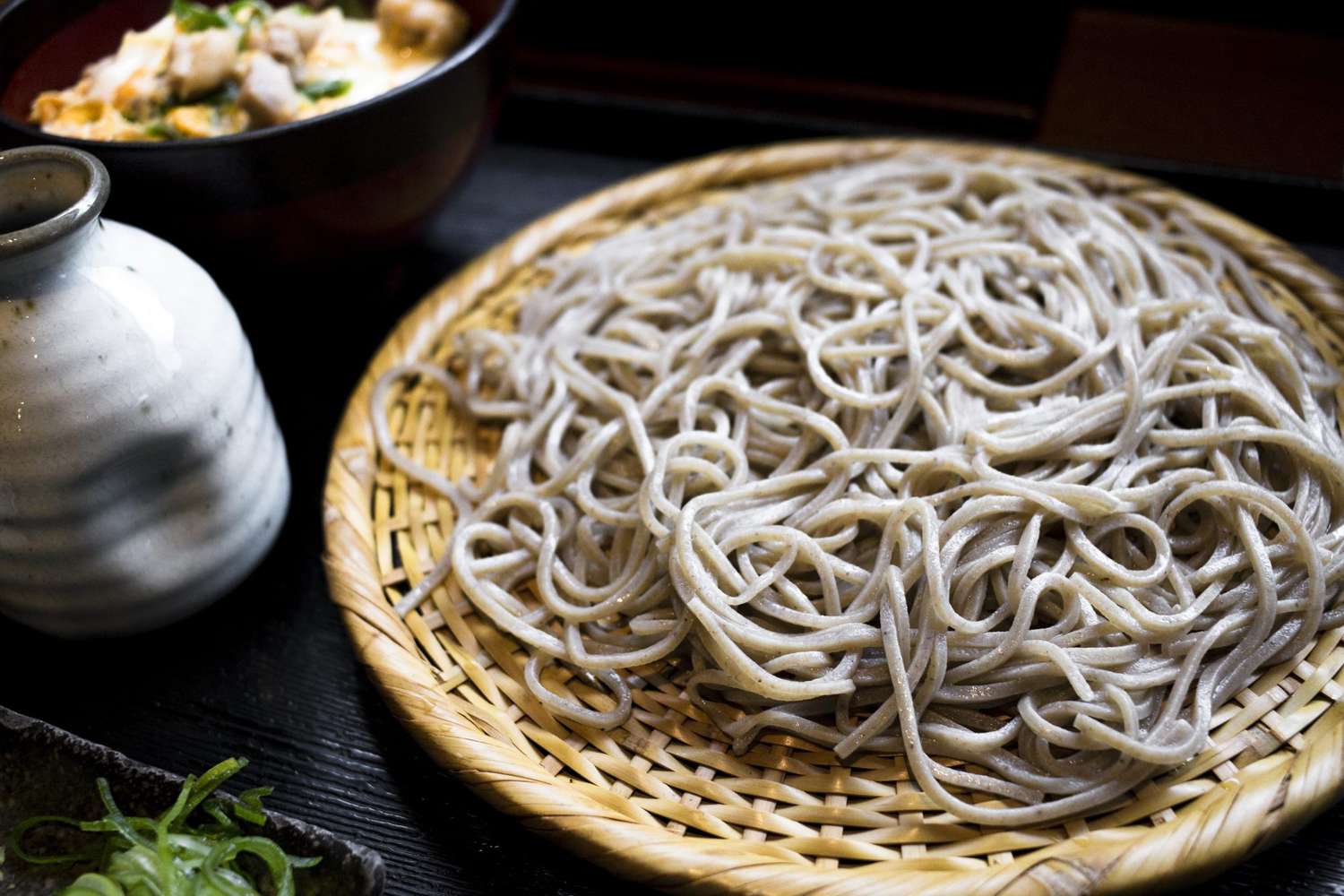
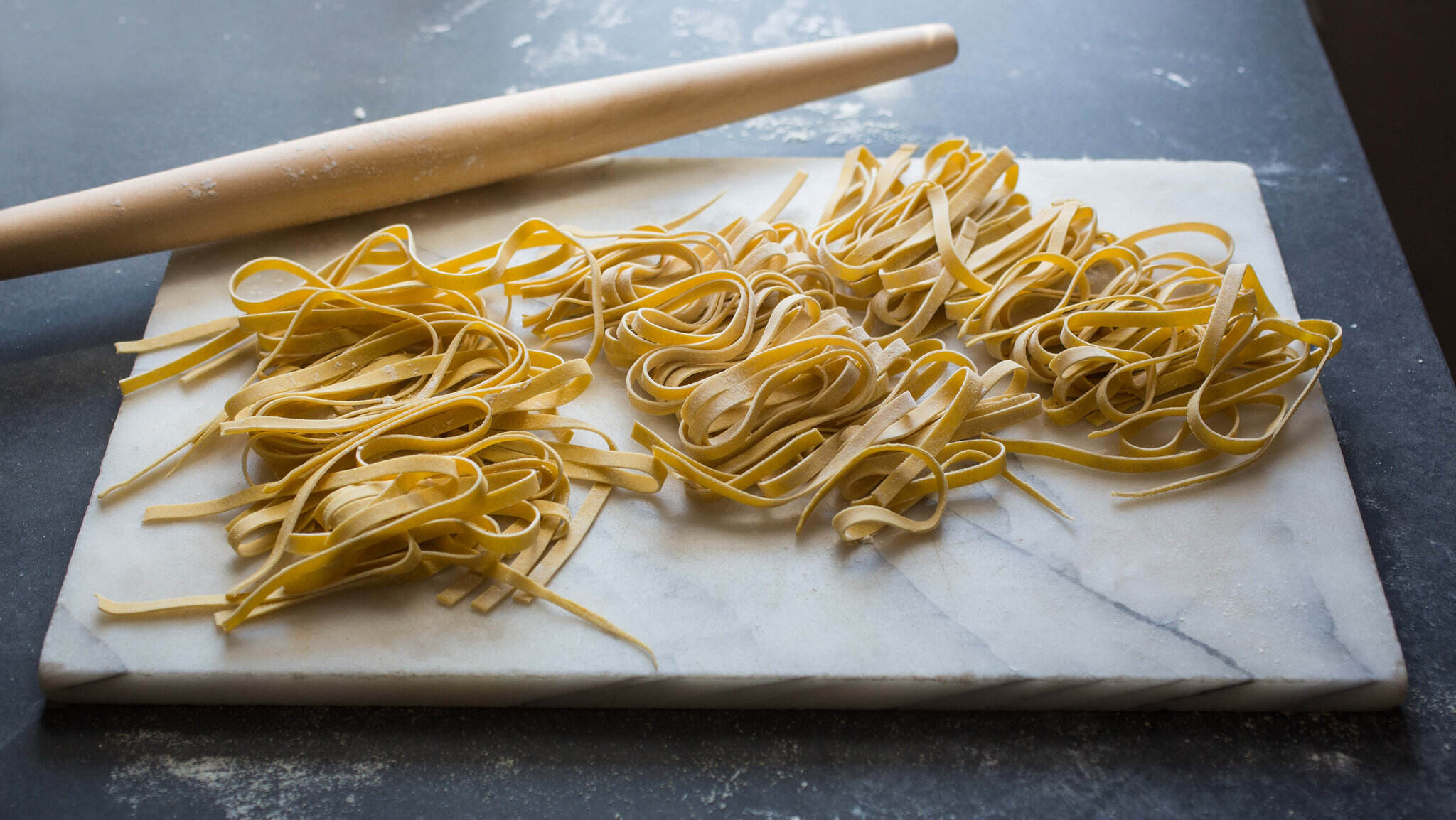

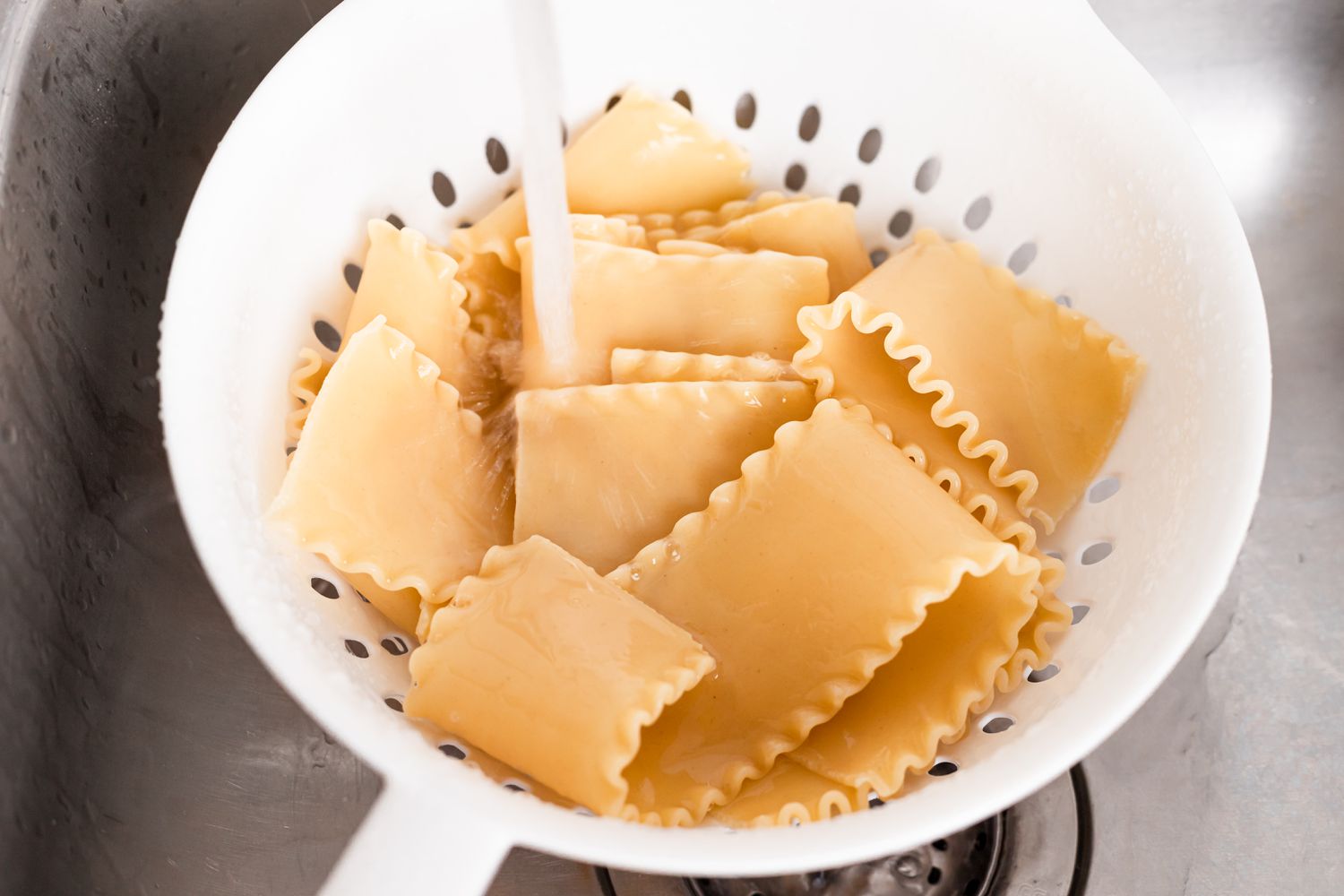

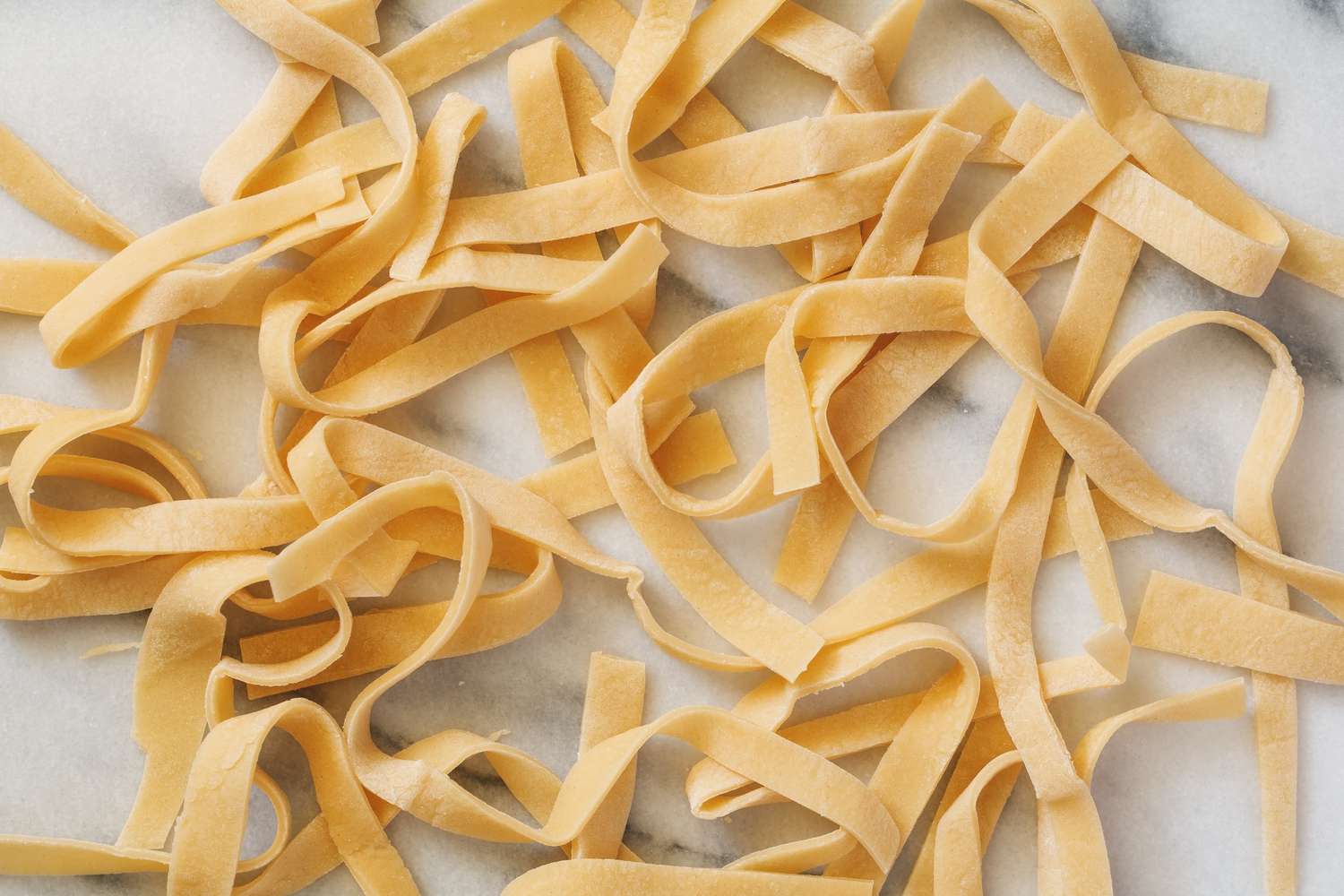
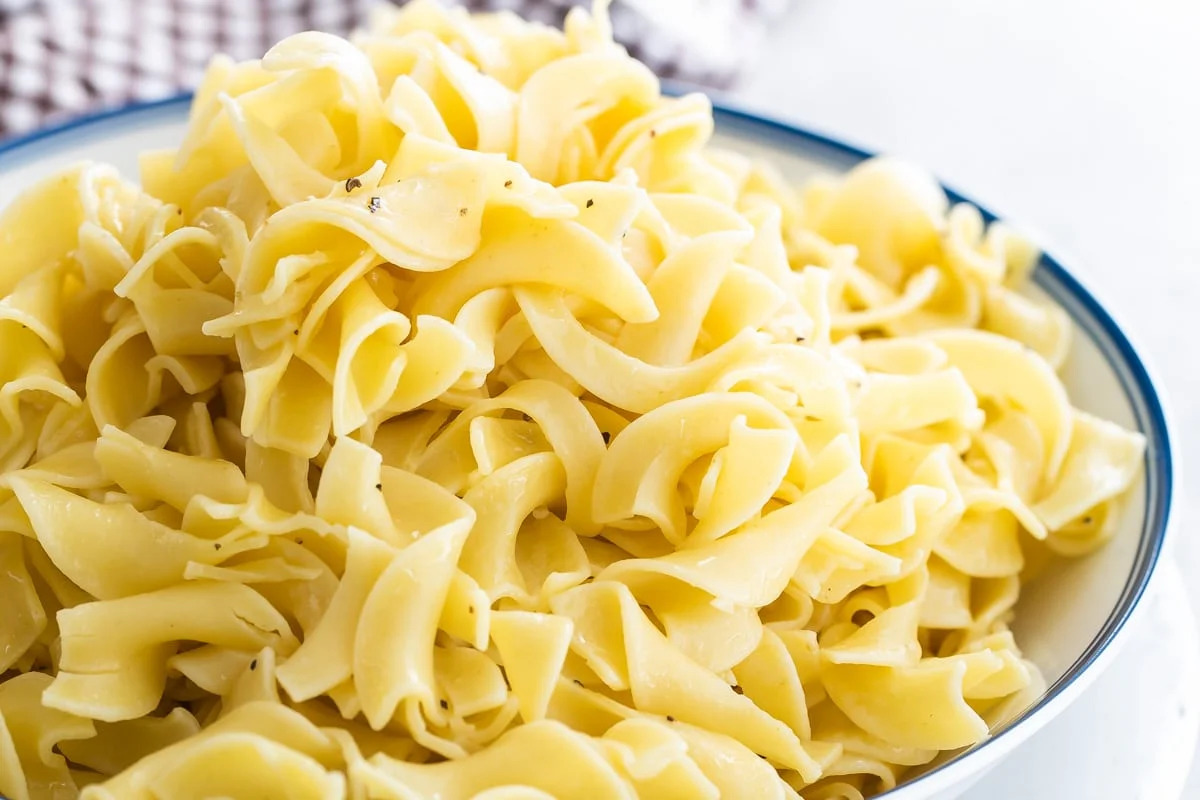
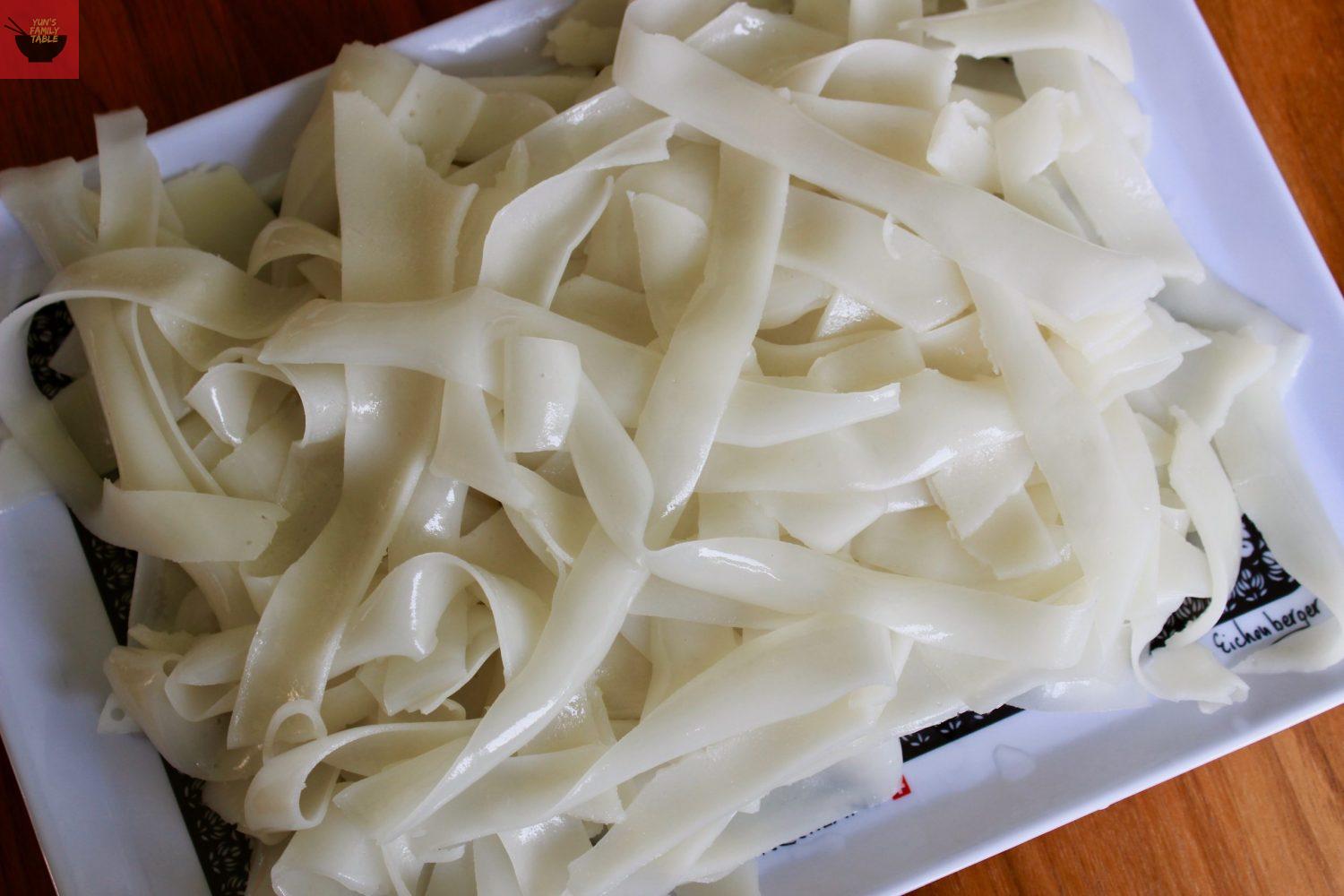
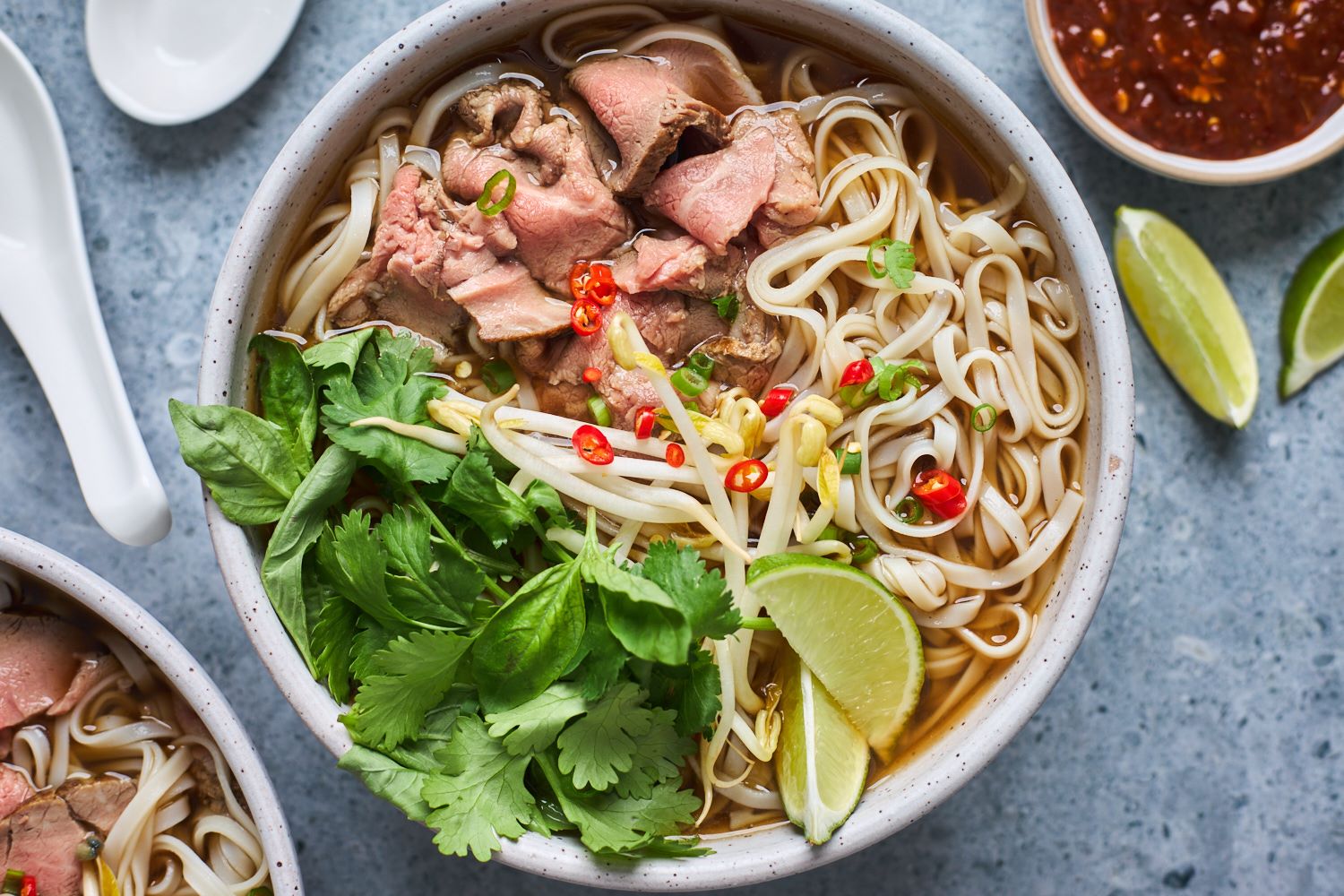

0 thoughts on “How To Store Cooked Ramen Noodles”